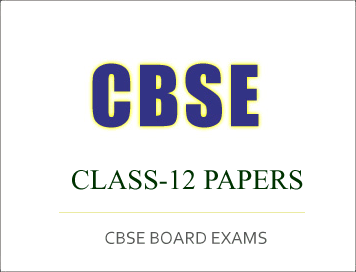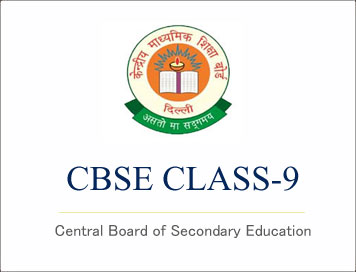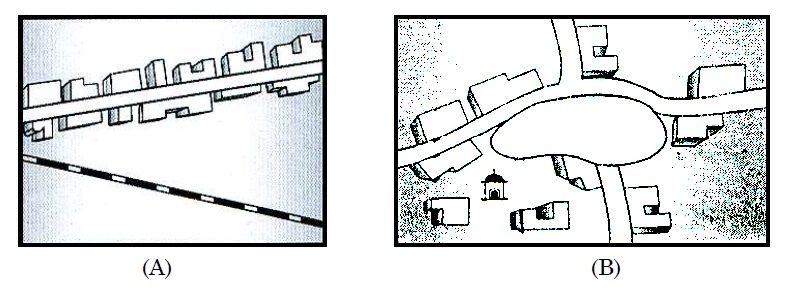CBSE PORTAL : CBSE Class-12 Exam 2017 : Foreign Scheme Question Paper, Economics | |
- CBSE Class-12 Exam 2017 : Foreign Scheme Question Paper, Economics
- CBSE 2017-18 Syllabus Class-9 : Hindi(हिंदी मातृभाषा)
- CBSE 2017-18 Syllabus Class 9 : ENGLISH - LANGUAGE AND LITERATURE
- CBSE 2017-18 Syllabus Class-9 : Foundation Of Information Technology (FIT)
- CBSE Class-12 Exam 2017 : Foreign Scheme Question Paper, Geography
- CBSE Class-12 Exam 2017 : Foreign Scheme Question Paper, Political Science
- CBSE Class-12 Exam 2017 : Foreign Scheme Question Paper, Biology
- CBSE Class-12 Exam 2017 : Foreign Scheme Question Paper, Chemistry
| CBSE Class-12 Exam 2017 : Foreign Scheme Question Paper, Economics Posted: 25 Aug 2017 01:00 AM PDT |
| CBSE 2017-18 Syllabus Class-9 : Hindi(हिंदी मातृभाषा) Posted: 25 Aug 2017 12:35 AM PDT
CBSE Class-9 Syllabus 2017-18
नवीं कक्षा में दाखिल होने वाले विद्यार्थी की भाषा शैली और विचार बोध का ऐसा आधार बन चुका होता है कि उसे उसके भाषिक दायरे के विस्तार और वैचारिक समृद्धि के लिए ज़्ारूरी संसाधन मुहैया कराए जाएँ। माध्यमिक स्तर तक आते-आते विद्यार्थी किशोर हो गया होता है और उसमें सुनने, बोलने, पढ़ने, लिखने के साथ-साथ आलोचनात्मक दृष्टि विकसित होने लगती है। भाषा के सौंदर्यात्मक पक्ष, कथात्मकता / गीतात्मकता, अखबारी समझ, शब्द की दूसरी शक्तियों के बीच अंतर, राजनैतिक एवं सामाजिक चेतना का विकास, स्वयं की अस्मिता का संदर्भ और आवश्यकता के अनुसार उपयुक्त भाषा-प्रयोग, शब्दों के सुचिंतित इस्तेमाल, भाषा की नियमबद्ध प्रकृति आदि से विद्यार्थी परिचित हो जाता है। इतना ही नहीं वह विभिन्न विधाओं और अभिव्यक्ति की अनेक शैलियों से भी वाकिफ़ होता है। अब विद्यार्थी की पढ़ाई आस-पड़ोस, राज्य-देश की सीमा को लांघते हुए वैश्विक क्षितिज तक फैल जाती है। इन बच्चों की दुनिया में समाचार, खेल, फ़िल्म तथा अन्य कलाओं के साथ-साथ पत्र-पत्रिकाएँ और अलग-अलग तरह की किताबें भी प्रवेश पा चुकी होती हैं। इस स्तर पर मातृभाषा हिंदी का अध्ययन साहित्यिक, सांस्कृतिक और व्यावहारिक भाषा के रूप में कुछ इस तरह से हो कि उच्चतर माध्यमिक स्तर तक पहुँचते-पहुँचते यह विद्यार्थियों की पहचान, आत्मविश्वास और विमर्श की भाषा बन सके। प्रयास यह भी होगा कि विद्यार्थी भाषा के लिखित प्रयोग के साथ-साथ सहज और स्वाभाविक मौखिक अभिव्यक्ति में भी सक्षम हो सके। इस पाठ्यक्रम के अध्ययन से (क) विद्यार्थी अगले स्तरों पर अपनी रुचि और आवश्यकता के अनुरूप हिंदी की पढ़ाई कर सकेंगे तथा हिंदी में बोलने और लिखने में सक्षम हो सकेंगे। (ख) अपनी भाषा दक्षता के चलते उच्चतर माध्यमिक स्तर पर विज्ञान, समाज विज्ञान और अन्य पाठ्यक्रमों के साथ सहज संबद्धता (अंतर्संबंध) स्थापित कर सकेंगे। (ग) दैनिक व्यवहार, आवेदन-पत्र लिखने, अलग-अलग किस्म के पत्र लिखने और प्राथमिकी दज़र््ा कराने इत्यादि में सक्षम हो सकेंगे। (घ) उच्चतर माध्यमिक स्तर पर पहुँचकर विभिन्न प्रयुक्तियों की भाषा के द्वारा उनमें वर्तमान अंतर्संबंध को समझ सकेंगे। (ड) हिंदी में दक्षता को वे अन्य भाषा-संरचनाओं की समझ विकसित करने के लिए इस्तेमाल कर सकेंगे, स्थानांतरित कर सकेंगे। कक्षा 9 व 10 में मातृभाषा के रूप में हिंदी-षिक्षण के उद्देष्य:
CLICK HERE TO DOWNLOADCourtesy: CBSE
|
| CBSE 2017-18 Syllabus Class 9 : ENGLISH - LANGUAGE AND LITERATURE Posted: 25 Aug 2017 12:01 AM PDT
CBSE Class-9 Syllabus 2017-18
Subject: ENGLISH - LANGUAGE AND LITERATUREBackground: Traditionally, language-learning materials beyond the initial stages have been sourced from literature: prose, fiction and poetry. While there is a trend for inclusion of a wider range of contemporary and authentic texts, accessible and culturally appropriate pieces of literature should play a pivotal role at the secondary stage of education. The English class should not be seen as a place merely to read poems and stories in, but an area of activities to develop the learner’s imagination as a major aim of language study, and to equip the learner with communicative skills to perform various language functions through speech and writing. Objectives: The general objectives at this stage are: • to build greater confidence and proficiency in oral and written communication • to develop the ability and knowledge required in order to engage in independent reflection and inquiry • to use appropriate English to communicate in various social settings • equip learners with essential language skills to question and to articulate their point of view • to build competence in the different registers of English • to develop sensitivity to, and appreciation of, other varieties of English, like Indian English, and the culture they reflect • to enable the learner to access knowledge and information through reference skills (consulting a dictionary / thesaurus, library, internet, etc.) • to develop curiosity and creativity through extensive reading • to facilitate self-learning to enable them to become independent learners • to review, organise and edit their own work and work done by peers At the end of this stage, learners will be able to do the following: • give a brief oral description of events / incidents of topical interest • retell the contents of authentic audio texts (weather reports, public announcements, simple advertisements, short interviews, etc.) • participate in conversations, discussions, etc., on topics of mutual interest in non-classroom situations • narrate the story depicted pictorially or in any other non-verbal mode
CLICK HERE TO DOWNLOADCourtesy: CBSE
|
| CBSE 2017-18 Syllabus Class-9 : Foundation Of Information Technology (FIT) Posted: 24 Aug 2017 11:42 PM PDT
CBSE Class-9 Syllabus 2017-18
Subject: Foundation Of Information Technology (FIT)Learning Outcomes: • Understanding organization of a computer system and networking. • Basic understanding of database design. • Ability to work on office tools such as word processor, spreadsheet and presentation. • Ability to apply knowledge and practice on office tools to develop IT applications. • Ability to use Indian languages in developing an IT application. • Ability to design HTML webpage. • Appreciation/awareness of societal impacts of information technology in business. Public services, education, health etc. • Awareness of basic information security issues. Job Opportunities: • Upon completion of this optional course on FIT at secondary level, one will be able to assist in IT-enabled office work.
CLICK HERE TO DOWNLOADCourtesy: CBSE |
| CBSE Class-12 Exam 2017 : Foreign Scheme Question Paper, Geography Posted: 24 Aug 2017 01:19 AM PDT |
| CBSE Class-12 Exam 2017 : Foreign Scheme Question Paper, Political Science Posted: 24 Aug 2017 01:01 AM PDT |
| CBSE Class-12 Exam 2017 : Foreign Scheme Question Paper, Biology Posted: 24 Aug 2017 12:51 AM PDT |
| CBSE Class-12 Exam 2017 : Foreign Scheme Question Paper, Chemistry Posted: 24 Aug 2017 12:45 AM PDT |
| You are subscribed to email updates from CBSE PORTAL : CBSE, ICSE, NIOS, JEE-MAIN, AIPMT Students Community. To stop receiving these emails, you may unsubscribe now. | Email delivery powered by Google |
| Google Inc., 1600 Amphitheatre Parkway, Mountain View, CA 94043, United States | |



No comments:
Post a Comment